10 Best Famous Monument in Coahuila | Historical Building in Coahuila

- By
- Aparna Patel
- |
- 15 May, 2023
- |
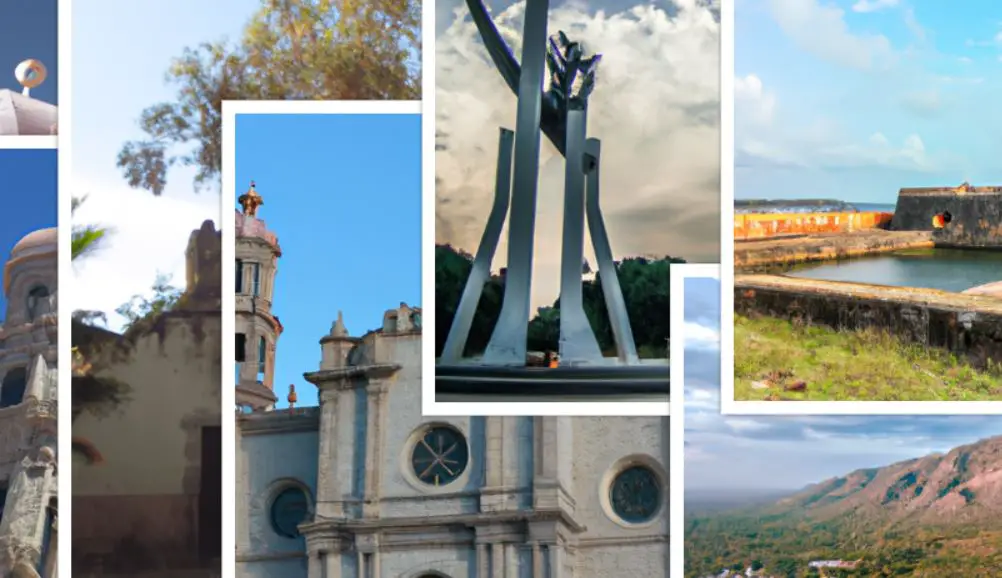
Known as one of the 32 federal states of Mexico, Coahuila is known for many interesting historical monuments. From the ancient Aztecs to the Spanish missionaries, monuments in Coahuila tell its unique history. Here, we’ll take a look at some of the famous monuments in Coahuila and discuss the historical importance of these incredible sites.
10 Famous Monuments To Visit In Coahuila
1. Parroquia de Nuestra Señora de la Asunción – Saltillo
Parroquia de Nuestra Señora de la Asunción – Saltillo is a Catholic parish located in the Saltillo municipality of Coahuila, Mexico. This parish is dedicated to Our Lady of the Assumption, the patron saint of Saltillo. The parish is located in the heart of the city, on the corner of Benito Juárez and Hernández Caballero.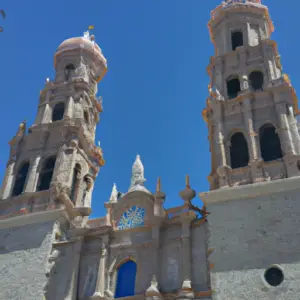
It serves local residents and those visiting the city, and offers Mass and other religious services. The parish also has a mission in San Luis Potosi, Mexico, and provides assistance to its parishioners, who are mostly poor and marginalized individuals. The interior of the church is quite beautiful, with high ceilings and large stained glass windows.
It also houses several works of art by renowned Mexican artists, such as Agustin Lazo and Diego Rivera. In addition, the parish is home to various historical artifacts, such as a 16th century sculpture of Mary, as well as a painting from the 19th century depicting the Virgin Mary and the infant Jesus.
2. Sierra de la Tinaja – Ciudad Acuña
Sierra de la Tinaja is located in Ciudad Acuña, Coahuila. It is a small mountain range consisting of two peaks, the Pico de la Tinaja and the Cerro de la Tinaja. It is located in the region that was once known as New Spain and is part of the Sierra Madre Oriental mountain range.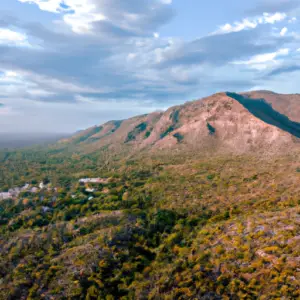
The Sierra de La Tinaja is surrounded by lush green mesquite and cedar trees, and is a popular destination for hikers and nature lovers. The area is also known for its scenic views, as the mountains reach a high elevation of 1,164 meters. The area is home to many species of birds, mammals, and plants, as well as various archaeological ruins.
Visitors can enjoy a variety of outdoor activities including hiking and rock climbing, as well as exploring the area’s many archaeological sites.
3. San Pedro del Gallo Chapel – Ramos Arizpe
San Pedro del Gallo Chapel is located in Ramos Arizpe, Coahuila, Mexico. It was constructed in his traditional and architectural form in the year 1771, by Juan Diez Vieyra, to honor Saint Peter the Apostle. It is the oldest temple of Ramos Arizpe and the reminder of its past.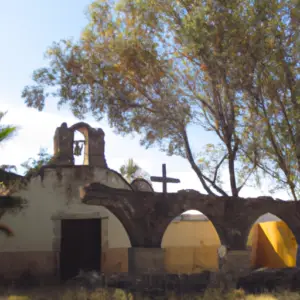
This chapel is known for its baroque style and is one of the most visited sites in the city. The chapel has a beautiful facade with, two towers, and sculptures of two saints, St. Peter and St. Paul. Inside, it has glass windows, ornate chandeliers, altars and wooden benches. Visitors can also see a painting of Jesus, unique and very meaningful for the region.
The chapel is open for worship to the public regularly and for guided tours, during the weekends and on holidays.
4. Soto la Marina Fort – Soto la Marina
Soto la Marina Fort is a large relic of the Spanish Colonial period in Coahuila, Mexico. The fort was constructed to protect against Native American attacks, and is considered the largest surviving 18th-century military fortification in the region. Located in the rural municipality of Soto la Marina, the fort is today primarily a tourist attraction, with visitors marveling at the walls and structures that remain intact.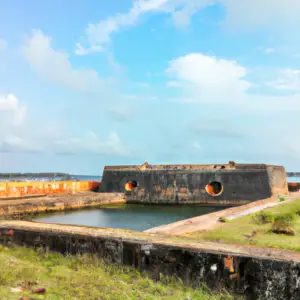
History
Soto la Marina Fort was constructed between 1775 and 1795 as a response to attacks from the local Native American population. Originally constructed as a simple building, it was later expanded with a wall and four towers which still stand today. It was also outfitted with weapons, such as cannons and muskets, to increase its defensive capabilities.
The fort is best known for the battle of Soto la Marina on November 15th, 1799, in which supporters of the Spanish Crown fought against a guerrilla force of indigenous people. The fort’s superior defensive capabilities and the Spanish forces’ numerical advantage allowed them to emerge victorious.
Present Day
Today the fort stands as a historical monument and is considered a major tourist attraction in the municipality of Soto la Marina. Visitors to the fort are encouraged to explore and admire its walls, towers, as well as the artifacts and cannons that remain on the site. The fort is also open for special events and is a popular destination for school trips.
The fort is managed by the local government and offers guided tours for a small fee. It is open from 9 am to 5 pm on Tuesday through Sunday.
In 2020, the fort was added to the UNESCO World Heritage Tentative List as a sign of its importance to Mexican history and culture.
5. Semana Trágica Monument – Monclova
The Semana Trágica Monument in Monclova, Coahuila, Mexico, is a memorial to commemorate the deaths of miners during the Tragic Week of April 1910. The monument was created in 1954, and it has since been visited by over 100,000 people each year to pay tribute to the fallen miners.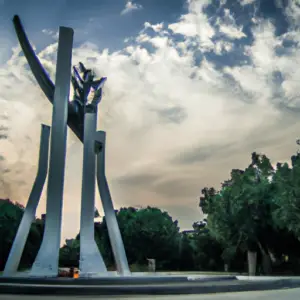
The monument stands as a reminder of a civil war that saw mass labor unrest and lead to the death of over 300 miners. The monument includes a bronze sculpture of a miner and four pillars that list the names of the men who died in the tragedy. The monument stands in front of a large plaza for visitors to contemplate the tragedy.
The Plaza de la Semana Trágica also has a number of murals depicting the events of the Tragic Week, as well as a memorial garden dedicated to those who died. The plaza also features a small museum that displays various artifacts associated with the incident.
6. Museo de Coahuila – Saltillo
The Museo de Coahuila – Saltillo is the oldest and most important museum in the state of Coahuila in northern Mexico. Located in the heart of Saltillo, the museum’s collection includes more than two thousand archaeological and historical pieces from pre-Hispanic and contemporaneous times, as well as a large photographic archive. Also of great importance is a library that contains books, newspapers and documents of historical, archaeological and artistic interest.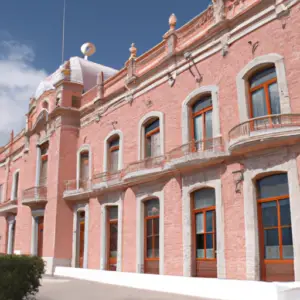
The museum was founded in 1825, with the purpose of preserving documents, archaeological and historical artifacts, and documents related to its founding. Since its inception, the museum has been collecting and preserving items of significant historical and archaeological value, such as masks and sculptures from pre-Hispanic cultures, traditional dances, religious and colonial symbols, such as paintings and furniture from the viceregal period, and photographs from the 19th and 20th centuries.
As part of its mission, the museum also works on public outreach, with lectures and programs for students and the general public.
In addition to its exhibitions, the museum also houses a research center and offers curatorial services. In 2008, it was named the National Museum of Art by the Mexican Congress. It is an important site for research and study, and it has been working with numerous national and international institutions. In 2017, it became a pioneer in digital exhibitions and educational materials. Today, the museum continues to be a cultural reference for the city of Saltillo and all of Coahuila.
7. La Virgen de Guadalupe Chapel – Piedras Negras, Mexico
La Virgen de Guadalupe Chapel is located in Piedras Negras, Coahuila, Mexico. It is an architecturally distinctive Catholic Church built in the latter half of the 20th century. The chapel is dedicated to the devotion of the titular Our Lady of Guadalupe, the patroness of Mexico, and serves as a destination of pilgrimages and celebrations throughout the year.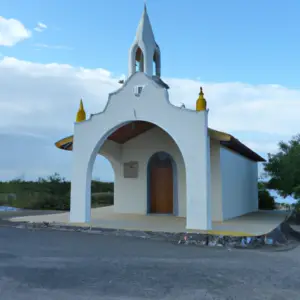
Included in the chapel complex are a large outdoor area where outdoor Masses and special celebrations including folkloric and traditional expressions are held. The structure of the church itself is a simple, one-level, modernist design with a central nave, transept, and small chapel.
The exterior features a sculpture of the Virgen de Guadalupe. The interior, containing the main altar, exhibits a golden hue and decorated carefully with stained glass, incense, and various religious iconography, creating a truly stunning and captivating atmosphere for prayer and worship.
8. Torreón Correctional Facility – Torreón
Torreón Correctional Facility – Torreón is a prison in Coahuila, Mexico, located in the city of Torreón. It is run by the Ministry of Security of the Government of Coahuila. The facility is one of the largest prisons in Mexico, with a capacity of 2,500 inmates. It is divided into 6 sections, each dedicated to different security levels. In addition to incarceration, the facility provides a range of services, including educational programs, vocational training, and psychiatric care. Inmates have access to a library, a gym, sports fields, and a chapel.
The Torreón facility was built in 1981, with the aim of replacing an existing prison prone to frequent escapes. It is noted for its overcrowding, with reports by the Ministry of Security indicating an occupancy beyond its capacity. In 2017, a court ordered the Mexican government to reduce the inmate population in the prison, though the issue of overcrowding remains a problem.
Torreón Correctional Facility – Torreón is also known for its levels of violence, most of which is perpetrated by gangs. In 2013, four inmates were killed in a dispute between rival gangs, while in 2014 a gang-related riot occurred in the facility, resulting in seven deaths. In response to such issues, authorities have implemented security measures such as improved surveillance and restrictions on gang activity.
Despite such measures, the overall conditions at Torreón Correctional Facility – Torreón remain poor, with reports citing a lack of medical care, inadequate sanitation, and a general lack of support for the inmates. In an attempt to improve conditions, the facility has since been receiving donations from outside organizations, with support from the Mexican Red Cross.
9. El Palomar Arcos – Torreón
El Palomar Arcos – Torreón is an arch bridge located in the city of Torreon in Coahuila, Mexico. The bridge is part of the major infrastructure expansion project in the city.
The bridge was built by the firm SACYR Constructions, granting a direct connection between El Palo and Arcos neighborhoods, as well as the highway from Torreon to Saltillo. It was opened in 2014 and as of 2020 it is still in use.
The bridge spans a total length of 1.4 kilometers, is 60 meters high and uses a smart lighting system for its nighttime illumination.
10. Santa Maria de los Ángeles Church – Saltillo
Santa Maria de los Ángeles Church is located in Saltillo, Coahuila, Mexico. It is a Baroque-style church built in the 16th century by the Augustinian order for the spiritual needs of the people in the area.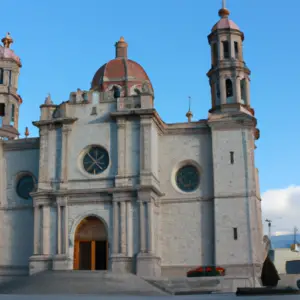
The original church was built in 1577 but it suffered from many modifications and reforms over the years.
Inside, the church boasts a beautiful gilded altarpiece that is dedicated to the Immaculate Conception. There are many pieces of artwork to be found in the church including allegories of the four Evangelists, two angels, and a statue of the Virgin Mary. The church also has a convent and a chapel.
Search Posts
Latest posts
-
5 Mar, 2024
How to avoid drinking vodka?
Popular posts
-
5 Mar, 2024
Why prohibit engine braking?
-
5 Mar, 2024
How to avoid drinking vodka?